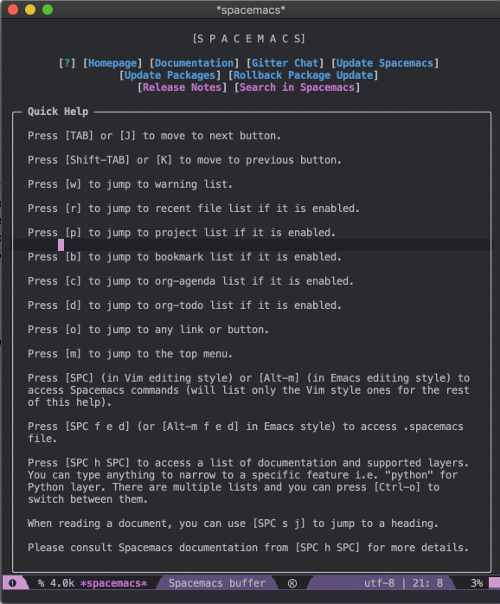
" Ctl + f (x2) to stop highlighting the search results
Enable syntax highlight and better colors. Highlight the line where your cursor is at. vimrc file, may I suggest a couple options for you to add? Since we are hereīy "here" I mean editing the. By doing this, even if you enter vim by accident, you can use it like a normal text editor or at the very least you can get out of it fast. This method is what I would recommend for the people who have no intention of using vim frequently (or even use it at all). And what's even better, is that we can get out of it easily using Ctrl + q. Now when you open vim just like that, it will already be in easy mode. In our home folder, we can create a file called. There is another way to enable this mode without using command line arguments. Again, you can put this in an alias or script. This command will open vim in easy mode and create a Ctrl + q shortcut that will close vim. On the other hand, if all we want is a shortcut to get out I say we create one. And when you finish editing stuff you just close that window. This way when you call the evim command or call the script vim will open in another window. Xterm - e vim - y $ want to replace xterm with something else. We could create an alias that uses our favorite terminal to open vim. If what we need is a graphical interface then lets just use one. But if you want to give this mode a chance, keep reading. Some command-line experts out there must be thinking "well, just use nano." I mean, yeah, that's a good solution. So I guess they thought it wasn't necessary, because you would just close the "application" where vim is in. That's right, with vim in a graphical interface. It does look like this easy mode was designed to be used in a GUI. Anyway, if you want to exit vim while in this mode this is what you do: use ctrl + o to go in normal mode, press :, type q and then press Enter. The big flaw on the planĬool, now why is it that no one talks about this mode? Well maybe is because it makes it even harder to get out of vim (oh, the irony). Another way would be using the evim command. On the command line we provide the -y flag to vim, like this vim -y. So, when we active this mode vim just reads and executes this file. You can check it out with vim if you want, use this command vim -R -c 'edit $VIMRUNTIME/evim.vim' (to get out use ZZ or just close the terminal). This "easy mode" is actually just a set of options written in a file called evim.vim. 
It even enables some options that will make the experience a bit more intuitive, like mouse support, so we can select text with the mouse. Ctrl + a: selects all text in the file.Ctrl + v: paste text from the clipboard.It also provides some keyboard shortcuts that we all know and love, such as: For the people who have entered vim by accident and have no knowledge of how it works this feature alone could be a huge improvement. On a more serious note, the first thing you'll notice is that we can insert and edit text in a more conventional way. In this mode vim is suppose to behave like a conventional text editor, you know the type, one of those that let us edit things immediately. Easy, what does that mean?Īccording to the documentation it was made to help people that don't use vim often enough to learn its commands.
#FIND FILES VIA COMMAND E VIM HOW TO#
So it turns out vim has an "easy mode." Who knew? That will be the topic today, we will learn what's the deal with this mode, we'll figure out how to enable it, see why almost nobody pays attention to it, and lastly I'll show you some stuff you can do to make it a bit nicer. Vim's easy mode: making vim behave like a 'conventional' text editor





 0 kommentar(er)
0 kommentar(er)
